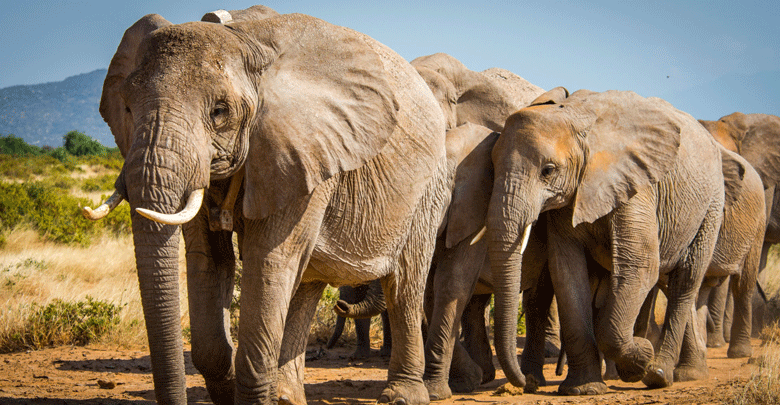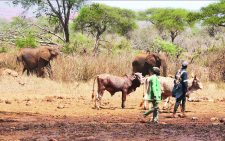Thirteen elephants to be translocated to Kenya

Kenya and United Kingdom (UK) are planning to fly 13 African elephants from England to Mwaluganje Elephant Sanctuary in Kwale county.
The 13 elephants weighing 25 tonnes in total will be flown more than 7,000 km (4,350 miles) across the globe to their ancestral sanctuary in Mwaluganje Elephant Sanctuary for rewilding.
Each elephant will be transported in an individual container customised to their needs and vets will be on hand throughout the flight.
Rewilding is a progressive approach to conservation. It’s about letting nature take care of itself, enabling natural processes to shape land and sea, repair damaged ecosystems and restore degraded landscapes.
The exercise is scheduled for August and is spearheaded by Aspinall Foundation (TAF), in partnership with Sheldrick Wildlife Trust (SWT) and Kenya Wildlife Service (KWS).
The elephants shall be translocated from the Howetts Wild Animal Park in Kent in the UK where they have been in captivity in an eight-acre enclosure.
The group is one of the most successful breeding herds of African elephants in Europe.
Kwale County KWS Senior, Warden Jacob Orale, said substantive preparations are ongoing to guarantee their safe arrivals. Orale added that already the government has initiated a tsetse fly eradication programme across the elephant sanctuary and the entire Shimba Hills National Reserve ecosystem.
“We want to reduce the density of the tsetse flies in the ecosystem for the safety of the elephants. The breeds have been in a tsetse fly-free environment and we don’t want them to encounter the problem we have here,” Orale said.
The Aspinall Foundation is a world-class animal conservation charity founded in 1984 in the United Kingdom. The foundation is dedicated to returning captive-bred animals to protected wilderness areas and reserves in their native habitats.
Protection projects
The Aspinall Foundation fund and manage animal protection projects in Congo, Gabon, Java, and Madagascar, as well as provide financial support to other animal protection schemes around the world including India and Cambodia.
Last week the government through Kenya Tsetse and Trypanosomiasis Eradication Council (KENTTEC) in partnership with Wildlife Research Institute (WRI), conducted research to determine the levels of tsetse flies in the entire Shimba Hills National Reserve.
The two institutions discovered that the density of tsetse flies in the reserve is at an alarming rate thus a threat to certain species of elephants especially the Black African Elephants that are set for relocation from the UK. The alarming results pushed the government to initiate a control campaign to eradicate the blood-sucking flies in collaboration with Aspinall Foundation and Sheldrick Wildlife Trust.
The Senior Warden said already close to 300 traps have been deployed across the Mwaluganje Elephant Sanctuary, to trap the blood sucking and disease-spreading insects. He noted that the trapping exercise shall be done continuously for close to eight months or one year until all the tsetse flies are completely eradicated in the entire Shimba Hills ecosystem.
‘‘The tsetse flies are many in the entire Shimba hills ecosystem but since the elephants shall be deployed in Mwaluganje, we hope to trap all tsetse flies by August,” Orale said.
Kenya Tsetse and Trypanosomiasis Eradication Council are a State Corporation under the Ministry of Agriculture, Livestock, Fisheries, and Co-operative’s gazette in 2012 by the government as a successor to the Pan -African Tsetse and Trypanosomiasis Eradication Campaign (PATTENC). – KNA










